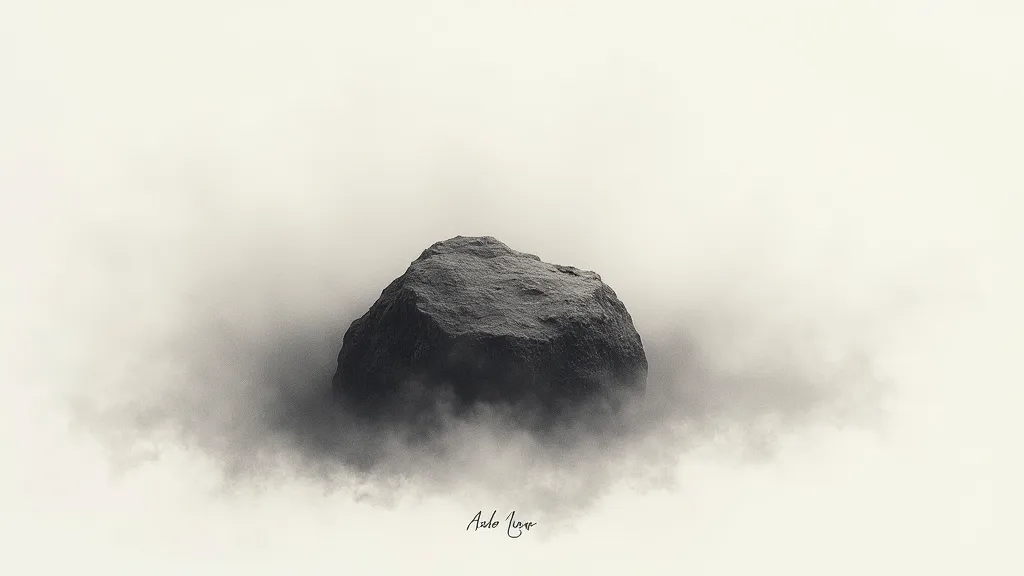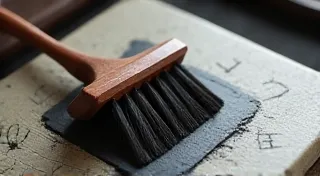The Zen Influence on Sumie Painting: Finding Peace Through Art
Sumie painting, the exquisite art of Japanese ink painting, is often admired for its beauty and technical skill. But beyond the graceful lines and nuanced tones lies a profound connection to Zen Buddhism, a connection that permeates the art’s philosophy, technique, and ultimate purpose. This isn't merely about creating a pleasing picture; it’s about cultivating mindfulness and finding inner peace through the creative process.
Understanding Zen and Its Principles
Zen Buddhism emphasizes direct experience and intuition, urging practitioners to move beyond intellectual understanding and connect with a deeper truth. Core tenets include:
- Mindfulness: Paying attention to the present moment without judgment.
- Simplicity: Appreciating the beauty in minimalism and eliminating distractions.
- Impermanence: Recognizing the transient nature of all things.
- "Mushin" (No-Mind): A state of mental clarity achieved through meditation, allowing action to arise spontaneously and effortlessly.
How Zen Principles Manifest in Sumie Painting
The influence of Zen is woven into the fabric of Sumie in several key ways:
- Emphasis on Spontaneity: Traditional Sumie encourages a degree of spontaneity. The artist strives to capture the essence of a subject quickly, trusting their intuition and allowing the brush to flow naturally. Deliberation and overthinking are discouraged; the goal is to let the brush "speak" through you.
- Limited Materials: The traditional Sumie palette is incredibly simple: black ink, water, and absorbent paper. This restriction forces the artist to focus on the essential qualities of the subject and master the nuances of ink density. It mirrors the Zen ideal of finding richness within limitation.
- Negative Space: Sumie heavily utilizes negative space (the areas left unpainted). This isn't simply a compositional element; it's a reflection of Zen’s understanding of emptiness and potential. The unpainted areas are just as important as the painted ones, contributing to the overall harmony and conveying a sense of vastness and openness.
- "Wabi-Sabi": The acceptance of imperfection and impermanence is a core element of both Zen and Sumie. “Wabi-sabi” embraces the beauty of asymmetry, roughness, and age. A Sumie painting might deliberately show the texture of the paper or the unevenness of the ink wash, celebrating these "flaws" as a sign of authenticity and connection to nature.

The Practice: Sumie as Meditation
For many Sumie practitioners, the act of painting itself becomes a form of meditation. The focused attention required to control the brush, observe the ink’s behavior, and translate the subject’s essence onto paper quiets the mind and brings one into the present moment. The repetitive strokes, the subtle variations in tone – these actions become a meditative rhythm. There’s less focus on the *result* (the finished painting) and more on the *process* of creation.
When approaching Sumie with a Zen mindset, it's not about striving for perfection. It’s about being present, observing the flow of ink, and letting go of expectations. Mistakes aren't failures; they are opportunities for learning and a chance to embrace the unpredictable nature of the creative process. Each stroke is a fresh start, a new opportunity to connect with the subject and with oneself.
Incorporating Zen into Your Sumie Practice
Here are a few suggestions for cultivating a Zen-inspired Sumie practice:
- Start with Simple Subjects: Begin with a single bamboo stalk, a rock, or a simple flower. These subjects allow you to focus on the fundamentals and observe closely.
- Breathe: Consciously focus on your breath before and during painting. This helps to center yourself and quiet the mind.
- Let Go of Judgement: Recognize that every stroke is a learning opportunity. Don't get hung up on mistakes; simply observe them and move on.
- Embrace "Mushin": Allow yourself to paint intuitively, letting go of preconceived notions and allowing the brush to flow naturally.

By integrating Zen principles into your Sumie practice, you can transform the art from a technical exercise into a deeply rewarding and mindful experience. It's a path to not only mastering the art of Japanese ink painting but also to cultivating inner peace and a deeper appreciation for the beauty and impermanence of life.





